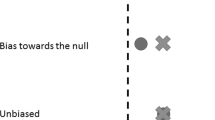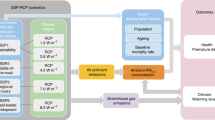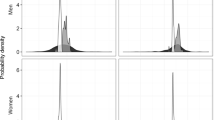Abstract
We evaluated whether associations between PM10 and daily mortality in Mexico City differ by the PM10 measurement device or by regional differences in particle composition. Additionally, we reanalyzed previously collected data in light of recent insights about flaws in commonly used time series analysis techniques. We examined daily associations between mortality and four indicators of ambient PM10 using Poisson regression, controlling for temperature and time trends with cubic natural splines. Associations were calculated for five subregions corresponding to five monitoring sites and pooled for the entire metropolitan area. PM10 was measured with three methods: Tapered Element Oscillating Microbalance (TEOM), Sierra–Anderson High Volume (Hi-Vol) and Harvard Impactor (HI), the latter only at one site. In addition, predicted values of daily PM10 were developed using the Hi-Vol measurements, which were taken every sixth day, and weather, visibility and other pollutant data. We assigned deaths to the exposure from the monitor nearest to their residence. We also re-evaluated the HI PM2.5 and mortality association in southwest Mexico City, which was estimated previously using nonparametric statistical models. Slight decreases in effect estimates were observed (a 1.45% increase (95% CI: 0.09%, 2.83%) in total mortality per 10 μg/m3 increment of PM2.5 at lag 0) compared to a 1.68% change (95% CI: 0.45%, 2.93%) using the previously employed nonparametric approach. Using data pooled over all the regions, PM10 measured by the TEOM and the predicted PM10 values showed little association with mortality at any of the lags examined. The pooled estimates for Hi-Vol PM10 (using one sixth of the data) were positive across all lags examined and significant for lags 3 and 5. No consistent patterns of differing associations were seen across regions that would correspond with particle toxicity or composition. Particulate air pollution, measured with gravimetric methods, is associated with daily mortality and presents a risk to health in Mexico City. The reanalysis suggests that previous research is robust to statistical method and likely to yield the same overall conclusions about the short-term effects of airborne particles on mortality.
This is a preview of subscription content, access via your institution
Access options
Subscribe to this journal
Receive 6 print issues and online access
$259.00 per year
only $43.17 per issue
Buy this article
- Purchase on Springer Link
- Instant access to full article PDF
Prices may be subject to local taxes which are calculated during checkout


Similar content being viewed by others
References
Akaike H. Information theory and an extension of the maximum likelihood principle, In: Petrov B.N., and Csaki F (Eds.). Second International Symposium on Information Theory Akademiai Kiado, Budapest, 1973.
Alfaro-Moreno E., Martinez L., Garcia-Cuellar C., Bonner J.C., Murray J.C., Rosas I., Ponce de Leon-Rosales S., and Osornio-Vargas A.R. Biologic effect induced in vitro by PM10 from three different zones of Mexico City. Environ Health Perspect 2002: 110: 715–720.
Allen G., Sioutas C., Koutrakis P., Reiss R., Lurmann F.W., and Roberts P.T. Evaluation of the TEOM method for measurement of ambient particulate mass in urban areas. J Air Waste Manage 1997: 47: 682–689.
Berkey C.S., Hoaglin D.C., Mosteller F., and O'Colditz G.A. A random-effects regression model for meta-analysis. Stat Med 1995: 14: 395–411.
Bonner J.C., Rice A.B., Lindroos P.M., O'Brien P.O., Dreher K.L., and Rosas I., et al. Induction of the lung myofibroblast PDGF receptor system by urban ambient particles from Mexico City. Am J Resp Cell Mol 1998: 19: 672–680.
Borja-Aburto V.H., Castillejos M., Gold D.R., Bierzwinski S., and Loomis D. Mortality and ambient fine particles in southwest Mexico City, 1993–1995. Environ Health Perspect 1998: 106: 849–855.
Borja-Aburto V.H., Loomis D.P., Bangdiwala S.I., Shy C.M., and Rascon-Pacheco R.A. Ozone, suspended particulates, and daily mortality in Mexico City. Am J Epidemiol 1997: 145: 258–268.
Castillejos M., Borja-Aburto V., Dockery D.W., Gold D.R., and Loomis D. Airborne coarse particles and mortality. Inhal Toxicol 2000: 12: 61–72.
Chow J.C. Measurement methods to determine compliance with ambient air quality standards for suspended particles. J Air Waste Manag 1995: 45: 320–382.
Chow J.C., Watson J.G., Edgerton S.A., and Vega E. Chemical composition of PM2.5 and PM10 in Mexico City during winter 1997. Sci Total Environ 2002: 287: 177–201.
Cleveland W.S., and Devlin S.J. Robust locally-weighted regression and smoothing scatterplots. J Am Stat Assoc 1988: 74: 829–836.
Dockery D.W., and Pope III C.A. Acute respiratory effects of particulate air pollution. Annu Rev Publ Health 1994: 15: 107–132.
Dominici F., McDermott A., Zeger S.L., and Samet J.M. On the use of generalized additive models in time-series studies of air pollution and health. Am J Epidemiol 2002: 156: 193–203.
Dominici F., McDermott A., Zeger S.L., and Samet J.M. National maps of the effects of particulate matter on mortality: exploring geographical variation. Environ Health Perspect 2003: 111: 39–44.
Edgerton S.A., Bian X., Doran J.C., Fast J.D., Hubbe J.M., Malone E.L., Shaw W.J., Whiteman C.D., Zhong S., Arriaga J.S., Ortiz E., Ruiz M., Sosa G., Vega E., Limon T., Guzman F., Archuleta J., Bossert J.E., Elliot S.M., Lee J.T., McNair L.A., Chow J.C., Watson J.G., Coulter R.L., Doskey P.V., Gaffney J.S., Marley N.A, Neff W., and Petty R. Particulate air pollution in Mexico City: A collaborative research project. J Air Waste Manage 1999: 49: 1221–1229.
Esteve-Ciudad G., Polygon center of mass centroids for ArcView 3.x: http://gis.esri.com/arcscripts/details.cfm?CFGRIDKEY=D47D7C29-4D09-11D4-942F00508B0CB419, 2000.
Hastie T.J., and Tibshirani R.J. Generalized Additive Models. Chapman & Hall, London, 1990.
HEI. Special report. Revised Analyses of Time-Series Studies of Air Pollution and Health. Health Effects Institute, Boston, MA, 2003, p. 306.
INEGI/DDF. Estadisticas del medio ambiente del Distrito Federal y Zona Metropolitana 1999., Instituto Nacional de Estadística, Geografía e Informática (Mexican National Institute of Statistics, Geography and Information) Departamento del Distrito Federal (Department of the Federal District) Mexico City, 1999.
Katsouyanni K., Touloumi G., Samoli E., Gryparis A., Monopolis Y., LeTertre A., Boumghar A., Rossi G., Zmirou D., Ballester F., Anderson H.R., Wojtyniak B., Paldy A., Braunstein R., Pekkanen J., Schindler C., and Schwartz J. Different convergence parameters applied to the S-PLUS GAM function. Epidemiology 2002: 13: 742–743.
Laden F., Neas L.M., Dockery D.W., and Schwartz J. Association of fine particulate matter from different sources with daily mortality in six U.S. cities. Environ Health Perspect 2000: 108: 941–947.
Lin C.A., Pereira L.A.A., Conceicao G.M.S., Kishi H.S., Milano Jr R., Braga A.L.F., and Saldiva P.H.N. Association between air pollution and ischemic cardiovascular emergency room visits. Environ Res 2003: 92: 57–63.
Loomis D., Castillejos M., Gold D.R., McDonnell W., and Borja-Aburto V.H. Air pollution and infant mortality in Mexico City. Epidemiology 1999: 10: 118–123.
McCullagh P., and Nelder JA. Generalized Linear Models, 2nd edn. Chapman & Hall, London, 1989.
Molina L.T., and Molina M.J. (Eds.). Air Quality in the Mexico Megacity: An Integrated Assessment. Kluwer Academic Publishers, Dordrecht, 2002.
NRC. Research Priorities for Airborne Particulate Matter I. Immediate priorities and a Long-Range Research Portfolio, Vol I. National Research Council, National Academy Press, Washington, DC, 1998.
O'Neill M.S., Loomis D., Torres-Meza V.M., Retama A., and Gold D. Estimating particle exposure in the Mexico City metropolitan area. J Expo Anal Environ Epidemiol 2002: 12: 145–156.
Osornio-Vargas A.R., Bonner J.C., Alfaro-Moreno E., Martinez L., Garcia-Cuellar C., Ponce de Leon-Rosales S., Miranda J., and Rosas I. Proinflammatory and cytotoxic effects of Mexico City air pollution particulate matter in vitro are dependent on particle size and composition. Environ Health Perspect 2003 http://ehpnet1.niehs.nih.gov/docs/2003/5913/abstract.html: [Online 25 April 2003].
Ostro B. The association of air pollution and mortality: examining the case for inference. Arch Environ Health 1993: 48: 336–342.
Ostro B., Sanchez J.M., Aranda C., and Eskeland G.S. Air pollution and mortality: results from a study of Santiago, Chile. J Expo Anal Environ Epidemiol 1996: 6: 97–114.
Patashnick H., and Rupprecht E.G. Continuous PM-10 measurements using the tapered element oscillating microbalance. J Air Waste Manag 1991: 41: 1079–1083.
Ramsay T.O., Burnett R.T., and Krewski D. The effect of concurvity in generalized additive models linking mortality to ambient particulate matter. Epidemiology 2003: 14: 18–23.
Samet J.M., Dominici F., Curriero F.C., Coursac I., and Zeger S.L. Fine particulate air pollution and mortality in 20 U.S. cities, 1987–1994. N Engl J Med 2000a: 343: 1742–1749.
Samet J.M., Dominici F., McDermott A., and Zeger S.L. New problems for an old design: time series analyses of air pollution and health. Epidemiology 2003: 14: 11–12.
Samet J.M., Zeger S.L., Dominici F., Curriero F., Coursac I., Dockery D.W., Schwartz J., and Zanobetti A. The National Morbidity, Mortality and Air Pollution Study. Part II: Morbidity, Mortality, and Air Pollution in the United States. Health Effects Institute, Cambridge, MA, 2000b p. 81.
Schwartz J. Air pollution and daily mortality: a review and meta-analysis. Environ Res 1994: 4: 36–52.
Tellez-Rojo M.M., Romieu I., Ruiz-Velasco S., Lezana M.A., and Hernandez-Avila M.M. Daily respiratory mortality and PM10 pollution in Mexico City: importance of considering place of death. Eur Resp J 2000: 16: 391–396.
Thurston G.D. A critical review of PM10-mortality time-series studies. J Expo Anal Environ Epidemiol 1996: 6: 3–21.
Wypij D. Spline and smoothing approaches to fitting flexible models for the analysis of pulmonary function data. Am J Resp Crit Care 1996: 154: S223–S228.
Acknowledgements
We thank Roberto Muñoz, José Luis Lezama, Victor Torres, Jean Keller, Lawrence Park, Pablo Cicero, Armando Retama, Carl Shy, Doug Dockery, Antonella Zanobetti, and Steve Wing. Funding sources include the Mellon Foundation, UNC Institute of Latin American Studies, a Fulbright-Garcia Robles grant, and a UNC Kenan Fellowship. Some of this work was completed while Dr. O'Neill was employed at the National Institute of Public Health, Cuernavaca, Mexico and while at Harvard University under the training program in environmental epidemiology, National Institute of Environmental Health Sciences (NIEHS), grant 2 T32 ES07069-24, NIEHS ES00002, and EPAR827353. This paper's contents are solely the responsibility of the authors and do not necessarily represent the official views of the NIEHS.
Disclaimer: Support for some of the data collection was provided by Cooperative Agreements EPACR816071 and EPACR821762 from the US Environmental Protection Agency (US EPA) Health Effects Research Laboratory and by the Universidad Autonoma Metropolitana-Xochimilco (UAM-X). Although the research described in this paper received funding from the US EPA and UAM-X, it has not been subject to Agency review and therefore does not necessarily reflect the views of the Agency; no official endorsement should be inferred. Mention of trade names or commercial products does not constitute endorsement or recommendation for use.
Author information
Authors and Affiliations
Corresponding author
Rights and permissions
About this article
Cite this article
O'Neill, M., Loomis, D., Borja Aburto, V. et al. Do associations between airborne particles and daily mortality in Mexico City differ by measurement method, region, or modeling strategy?. J Expo Sci Environ Epidemiol 14, 429–439 (2004). https://doi.org/10.1038/sj.jea.7500341
Received:
Accepted:
Published:
Issue Date:
DOI: https://doi.org/10.1038/sj.jea.7500341
Keywords
This article is cited by
-
Impact of biomass burning and weather conditions on children’s health in a city of Western Amazon region
Air Quality, Atmosphere & Health (2013)
-
Distributed lag associations between respiratory illnesses and mortality with suspended particle concentration in Tula, a highly polluted industrial region in Central Mexico
International Archives of Occupational and Environmental Health (2013)
-
Monitoring of Submicron Particulate Matter Concentrations in the Air of Turin City, Italy. Influence of Traffic-limitations
Water, Air, and Soil Pollution (2009)
-
Ancillary human health benefits of improved air quality resulting from climate change mitigation
Environmental Health (2008)



